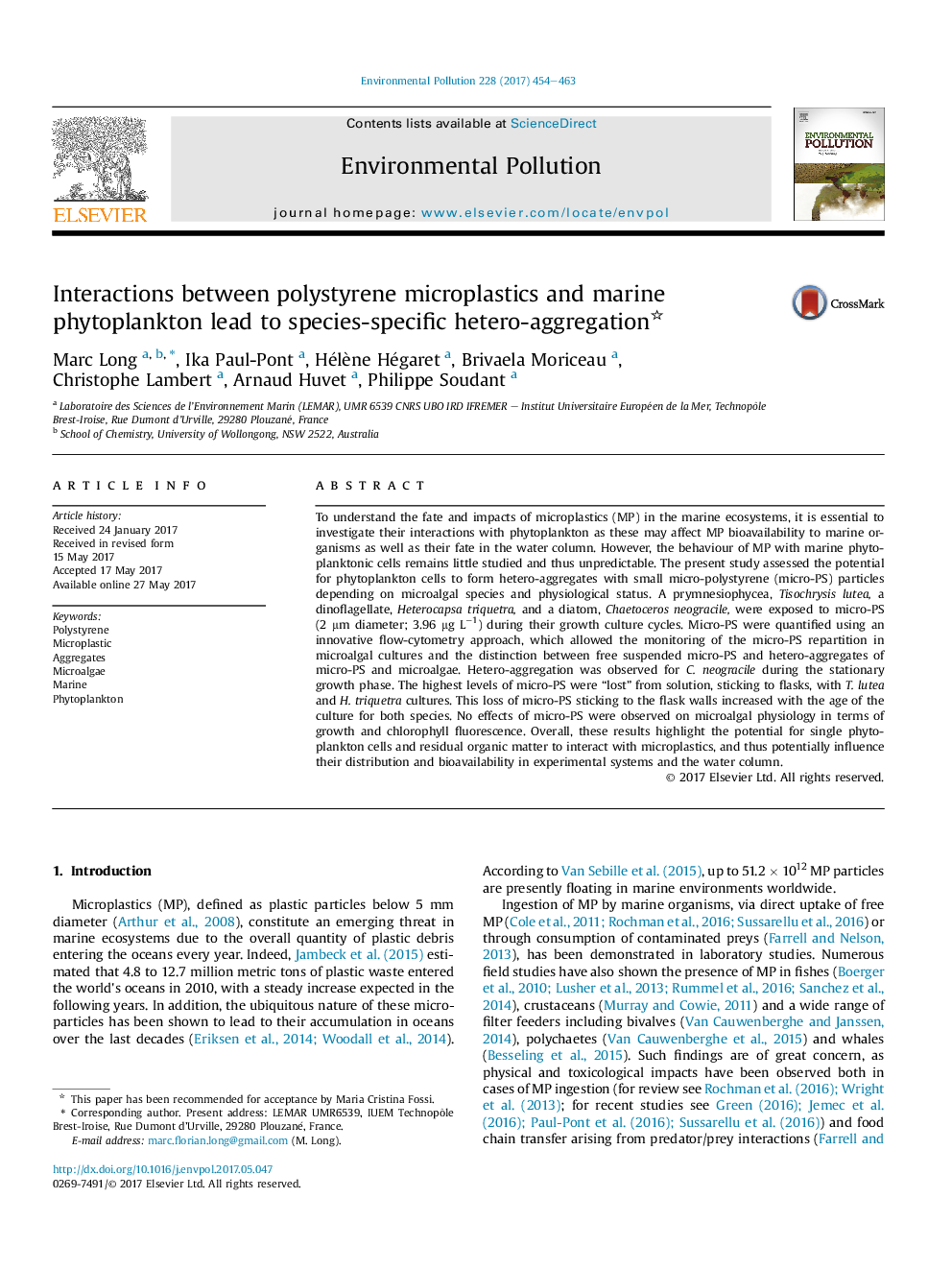| کد مقاله | کد نشریه | سال انتشار | مقاله انگلیسی | نسخه تمام متن |
|---|---|---|---|---|
| 5748894 | 1619145 | 2017 | 10 صفحه PDF | دانلود رایگان |
- Chaetoceros neogracile formed hetero-aggregates with micro-polystyrene.
- Hetero-aggregation of C. neogracile increased with culture age.
- Micro-polystyrene did not affect growth, morphology or fluorescence of free algal cells.
- Microplastic distribution and bioavailability may differ among species and experimental systems.
- Flow cytometry and 3D microscopy are good tools for studying MP distribution in water.
To understand the fate and impacts of microplastics (MP) in the marine ecosystems, it is essential to investigate their interactions with phytoplankton as these may affect MP bioavailability to marine organisms as well as their fate in the water column. However, the behaviour of MP with marine phytoplanktonic cells remains little studied and thus unpredictable. The present study assessed the potential for phytoplankton cells to form hetero-aggregates with small micro-polystyrene (micro-PS) particles depending on microalgal species and physiological status. A prymnesiophycea, Tisochrysis lutea, a dinoflagellate, Heterocapsa triquetra, and a diatom, Chaetoceros neogracile, were exposed to micro-PS (2 μm diameter; 3.96 μg Lâ1) during their growth culture cycles. Micro-PS were quantified using an innovative flow-cytometry approach, which allowed the monitoring of the micro-PS repartition in microalgal cultures and the distinction between free suspended micro-PS and hetero-aggregates of micro-PS and microalgae. Hetero-aggregation was observed for C. neogracile during the stationary growth phase. The highest levels of micro-PS were “lost” from solution, sticking to flasks, with T. lutea and H. triquetra cultures. This loss of micro-PS sticking to the flask walls increased with the age of the culture for both species. No effects of micro-PS were observed on microalgal physiology in terms of growth and chlorophyll fluorescence. Overall, these results highlight the potential for single phytoplankton cells and residual organic matter to interact with microplastics, and thus potentially influence their distribution and bioavailability in experimental systems and the water column.
247
Journal: Environmental Pollution - Volume 228, September 2017, Pages 454-463
